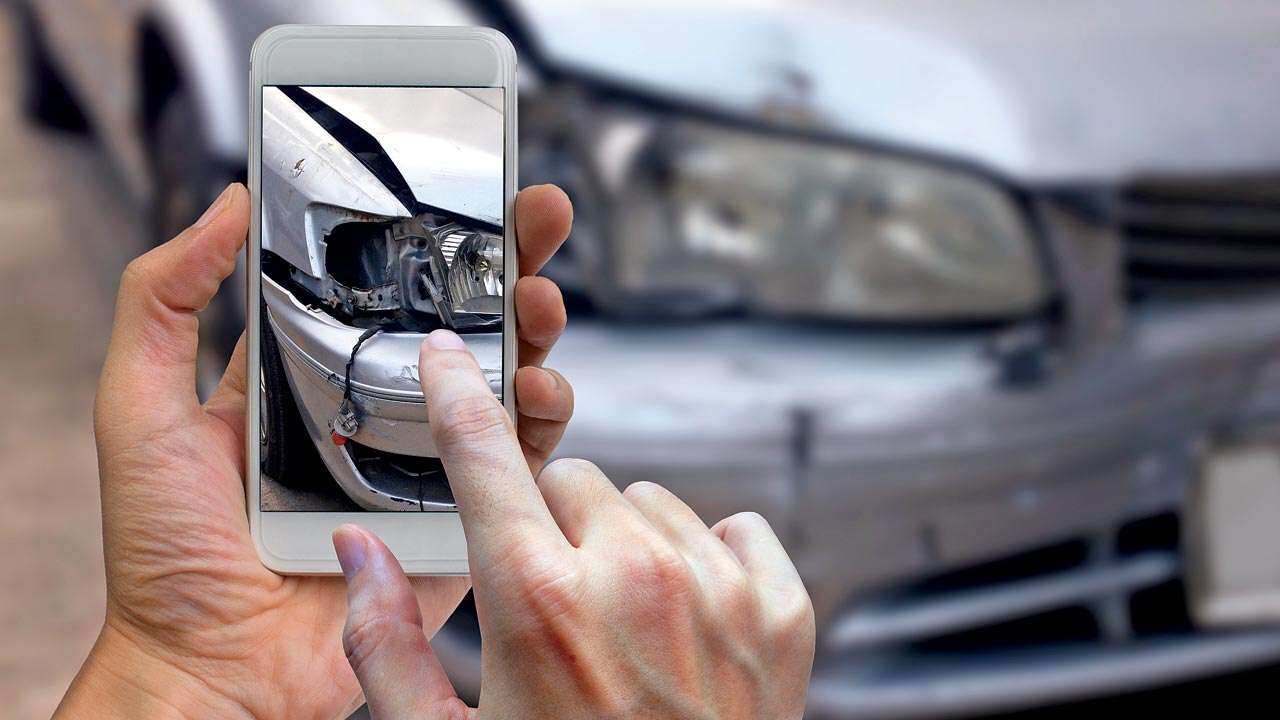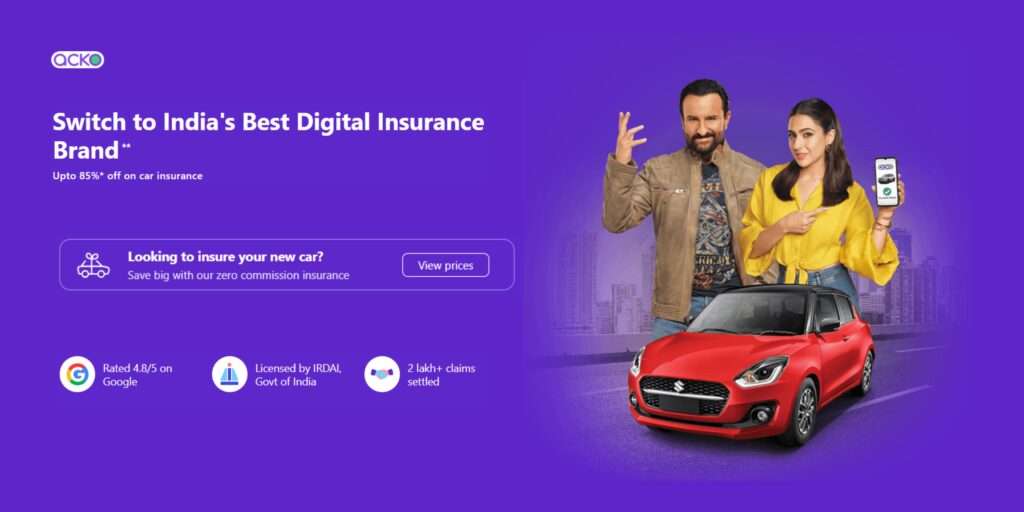Hitting the open road in India is a liberating experience. But with great freedom comes great responsibility, especially when it comes to safeguarding your car and yourself. That’s where car insurance steps in, acting as a financial shield against unforeseen circumstances. This blog delves into everything you need to know about car insurance in India, ensuring you cruise with confidence.
Why Car Insurance is Mandatory in India
Indian roads, while bustling with life, can be unpredictable. The Motor Vehicles Act, 1988 mandates at least third-party car insurance for all vehicles. This protects third parties – people or property other than you and your car – in case of an accident caused by you.
Skipping car insurance can lead to hefty fines (₹2,000 for the first offense and ₹4,000 for subsequent ones) and the burden of bearing any third-party liabilities yourself.
Types of Car Insurance in India
There are primarily two types of car insurance policies in India:
- Third-Party Liability (TPL) Insurance: This is the mandatory minimum coverage. It covers:
- Injuries or death of a third party (maximum ₹7.5 lakh for one person and ₹15 lakh for multiple people)
- Damage to third-party property (maximum ₹2 lakh)
- Comprehensive Car Insurance: This offers more extensive coverage, including:
- Third-party liabilities (as mentioned above)
- Damage to your own car due to accidents, theft, fire, natural calamities, riots, etc.
- Personal accident cover for the owner-driver (mandatory)
- Optional add-on covers like zero depreciation, 24/7 roadside assistance, etc.
What’s Covered in Car Insurance?
Understanding what’s included in your car insurance policy is crucial. Here’s a breakdown of the typical coverages:
- Third-party Liability: As mentioned earlier, this covers any legal liabilities arising from injuries or death of a third party or damage to their property caused by your vehicle.
- Own Damage (OD): This covers repairs to your car necessitated by accidents, theft, fire, natural disasters, etc. The policy pays for repairs or provides the Insured Declared Value (IDV) of the car in case of a total loss.
- Personal Accident (PA) Cover for Owner-Driver: This is mandatory in both TPL and comprehensive policies. It offers financial compensation in case of death or permanent disability sustained by the owner-driver in a car accident.
- Add-on Covers: These are optional benefits you can choose to enhance your policy’s coverage. Popular add-ons include:
- Zero Depreciation: This waives depreciation on car parts during repairs, ensuring you receive the full cost of replacements.
- 24/7 Roadside Assistance: Provides services like towing, flat tire repair, battery jumpstart, etc., in case of breakdowns.
- Engine and Gearbox Protection Cover: This covers repairs or replacements of the engine and gearbox in case of damage.
- Passenger Cover: Extends personal accident cover to passengers in your car.
What’s Not Covered in Car Insurance?
It’s important to be aware of exclusions in your car insurance policy. These typically include:
- Regular wear and tear: General wear and tear due to aging or regular use is not covered.
- Driving under the influence: Damages caused by driving under the influence of alcohol or drugs are not covered.
- Mechanical or electrical breakdown: Unless you have a specific add-on cover, the policy won’t cover mechanical or electrical breakdowns unrelated to accidents.
- Deliberate damage: Damages caused intentionally by the owner are not covered.
Understanding Comprehensive Car Insurance
Comprehensive car insurance offers the most extensive coverage for your car. Here’s a closer look at its components:
-
Coverage for Own Damage: This includes repairs or the Insured Declared Value (IDV) of the car in case of:
- Accidents: Regardless of who’s at fault, the policy covers repairs to your car arising from accidents.
- Theft: If your car is stolen, the policy reimburses you for the IDV or arranges for a replacement vehicle in some cases (depending on the policy terms).
- Fire: Damage caused by fire is covered, safeguarding you from losses due to infernos or electrical fires.
- Natural Calamities: Comprehensive insurance protects your car against damage caused by natural disasters like floods, earthquakes, cyclones, etc.
- Riots and Strikes: Damage to your car due to riots, strikes, or acts of vandalism is covered under comprehensive policies.
-
Personal Accident (PA) Cover for Owner-Driver (Mandatory): This offers financial compensation for the car’s owner-driver in case of death or permanent disability sustained during a car accident. The sum assured can vary depending on the policy chosen.
Optional Add-on Covers
Comprehensive policies allow you to customize your coverage further with add-on covers. Here are some popular options:
- Zero Depreciation Cover: This eliminates depreciation (reduction in value due to age) on car parts during repairs. Instead of receiving the depreciated value for replaced parts, you get the full cost, ensuring a higher claim payout.
- 24/7 Roadside Assistance: This provides invaluable assistance in case of breakdowns. Services may include towing, flat tire repair, battery jumpstart, and locksmith services (depending on the policy).
- Engine and Gearbox Protection Cover: This add-on covers repairs or replacements of the engine and gearbox in case of damage due to accidents, wear and tear, or lubricant malfunctions (specific terms may vary by policy).
- Passenger Cover: Extends personal accident cover to passengers in your car, offering financial aid in case of injuries or death sustained during an accident.
- Return to Invoice Cover: This add-on, especially beneficial for new cars, ensures you receive the invoice value of the car (including road tax and registration charges) in case of theft or total loss.
- No Claim Bonus (NCB) Protection: This add-on protects your No Claim Bonus (discount on premium for every claim-free year) even if you make a small claim during the policy period.
Choosing the Right Add-on Covers
Don’t get overwhelmed by the variety of add-on covers. Consider these factors when making your choices:
- Your car’s age and value: Newer, more expensive cars might benefit from zero depreciation and return to invoice cover. Older cars might prioritize roadside assistance and engine protection.
- Driving habits: If you drive frequently or in remote areas, 24/7 roadside assistance becomes more crucial.
- Budget: Evaluate the additional premium for each add-on and choose the ones that best suit your needs and budget.
By understanding the different types of car insurance and available add-on covers, you can make an informed decision and ensure your car, and yourself, are well-protected on the Indian roads. Remember, car insurance is an investment that provides peace of mind, allowing you to drive with confidence.
Choosing the Right Car Insurance Policy
With various insurers and policy options, selecting the right car insurance can feel overwhelming. Here are some factors to consider:
- Your Needs: Assess your needs based on your car’s value, driving habits, and risk tolerance. A new, expensive car might warrant comprehensive coverage with add-ons, while an older car might benefit from a basic TPL policy with a few essential add-ons.
- IDV: The Insured Declared Value is the sum assured for your car in case of theft or total loss. A higher IDV ensures better compensation but also leads to higher premiums.
- Premium: Compare premiums from different insurers. However, don’t solely focus on the cheapest option. Consider the insurer’s reputation, claim settlement ratio, and network garages for repairs.
- Claim Settlement Ratio: This ratio indicates the percentage of claims settled by the insurer. Choose an insurer with a high claim settlement ratio for a smoother.
You can check car insurance options such as Acko, Policy Bazaar, Tata AIG Car Insurance, etc.


